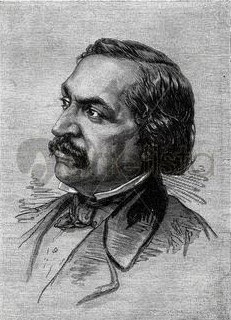A musical rendition of Lorraine Hansbury's A Raisin in the Sun opened at the Théâtre de la Porte Saint-Martin on April 21, 1979.
2009 Creative Commons License - Danglars2
Directed by Charles Axton, it starred Sandra Phillips as "Mama," Nate Barnett as "Walter Lee,", and Corliss Taylor-Dunn as "Ruth."
Though it came to Paris 36 years ago, Raisin in the Sun is the most recent of a long line of plays featuring black characters at the Porte Saint-Martin. The productions that preceded it were staged in the 19th century!
Between 1803 and 1892, at least eleven productions performed at the theater included black characters in the cast. But this is not to say that black people played these roles. The first black actors to appear on stage in Paris did so in 1847, and they were poorly received by audiences.
In April 1824, one of four versions of a play based on the popular novel called Ourika, by Claire de Duras, opened at the Porte Saint-Martin theater. The story line of Ourika, ou l'orpheline africaine (Ourika, or the African orphan), was fairly true to the novel - a young Senegalese girl is raised as a white French girl by an aristocratic couple and accidentally discovers her race when she overhears a conversation where two women are discussing her misfortune at never being able to marry a French man.
1924 Léonel de la Tourrasse
The novel was based on a true story about a black child who was purchased in or around 1788 by the Chevalier de Boufflers, the colonial administrator of Senegal, and given as a gift to the Duchess of Orléans. She dies of a mysterious illness at the age of sixteen.
In this production, the part of Ourika was played by French actress Marie Dorval.
Lithograph by Paul Delaroche
Public domain
Frédérick Lemâitre, a famous 19th-century actor, portrayed four black characters at the theater throughout the years, including Toussaint l'Ouverture (in a play of the same name) in 1850.
Public domain
Public domain
Ironically, many plays by Victor Séjour - a free man of color from Louisiana - were staged at the Porte Saint-Martin between 1852 and 1862, but none of them had black characters.
Public domain
In July 1937, Langston Hughes (whose poem "Harlem" was the inspiration for A Raisin in the Sun) spoke at the International Writers' Congress at the theater.
1936 Carl Van Vechten
Entrée to Black Paris!™ is a Discover Paris! blog.
If you like this posting, share it with your friends by using one of the social media links below!






























